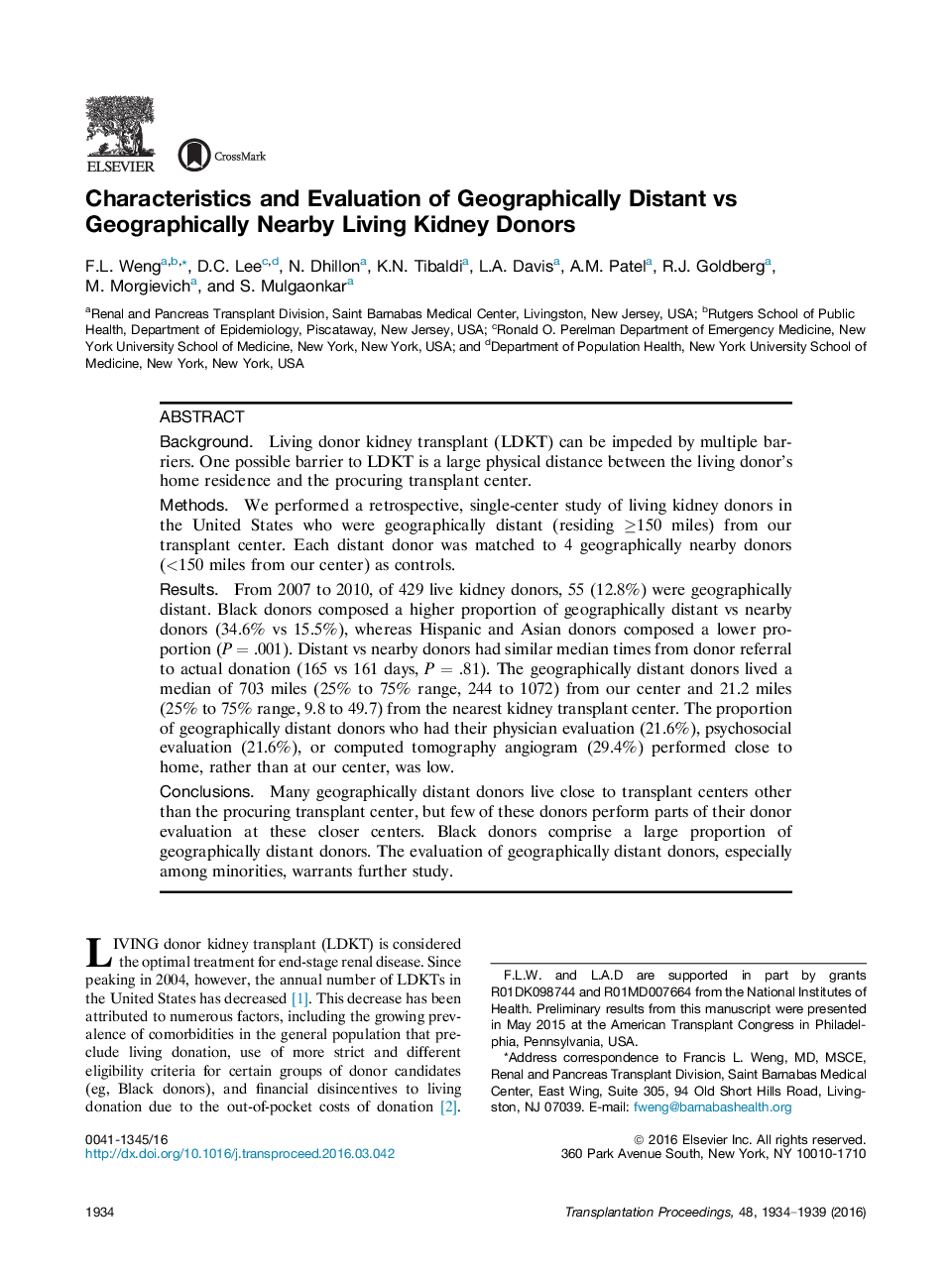| کد مقاله | کد نشریه | سال انتشار | مقاله انگلیسی | نسخه تمام متن |
|---|---|---|---|---|
| 5729125 | 1411676 | 2016 | 6 صفحه PDF | دانلود رایگان |
- Many living kidney donors are geographically distant from the transplant center.
- Black donors composed a higher proportion of geographically distant vs nearby donors.
- Days from referral to actual donation were similar for distant vs nearby donors.
- Few distant donors had their physician evaluation performed close to home.
- The evaluation of geographically distant donors warrants further study.
BackgroundLiving donor kidney transplant (LDKT) can be impeded by multiple barriers. One possible barrier to LDKT is a large physical distance between the living donor's home residence and the procuring transplant center.MethodsWe performed a retrospective, single-center study of living kidney donors in the United States who were geographically distant (residing â¥150 miles) from our transplant center. Each distant donor was matched to 4 geographically nearby donors (<150 miles from our center) as controls.ResultsFrom 2007 to 2010, of 429 live kidney donors, 55 (12.8%) were geographically distant. Black donors composed a higher proportion of geographically distant vs nearby donors (34.6% vs 15.5%), whereas Hispanic and Asian donors composed a lower proportion (P = .001). Distant vs nearby donors had similar median times from donor referral to actual donation (165 vs 161 days, P = .81). The geographically distant donors lived a median of 703 miles (25% to 75% range, 244 to 1072) from our center and 21.2 miles (25% to 75% range, 9.8 to 49.7) from the nearest kidney transplant center. The proportion of geographically distant donors who had their physician evaluation (21.6%), psychosocial evaluation (21.6%), or computed tomography angiogram (29.4%) performed close to home, rather than at our center, was low.ConclusionsMany geographically distant donors live close to transplant centers other than the procuring transplant center, but few of these donors perform parts of their donor evaluation at these closer centers. Black donors comprise a large proportion of geographically distant donors. The evaluation of geographically distant donors, especially among minorities, warrants further study.
Journal: Transplantation Proceedings - Volume 48, Issue 6, JulyâAugust 2016, Pages 1934-1939
